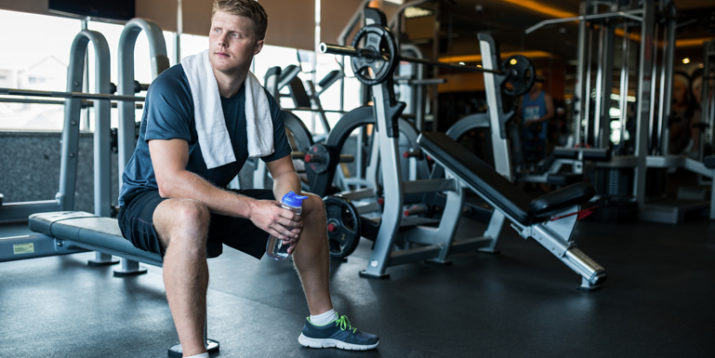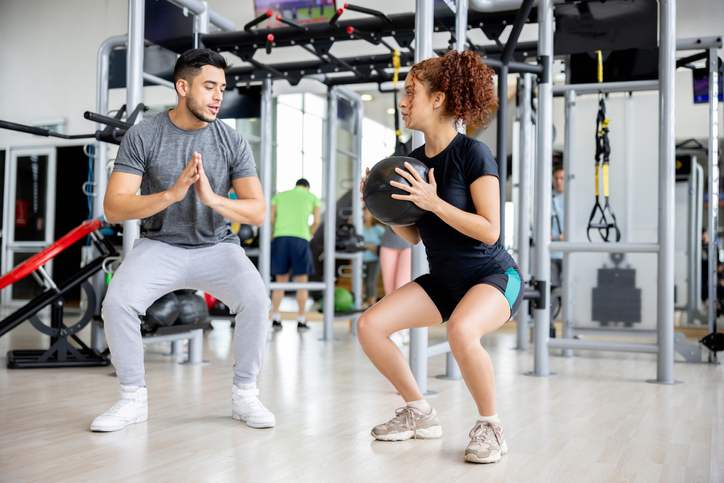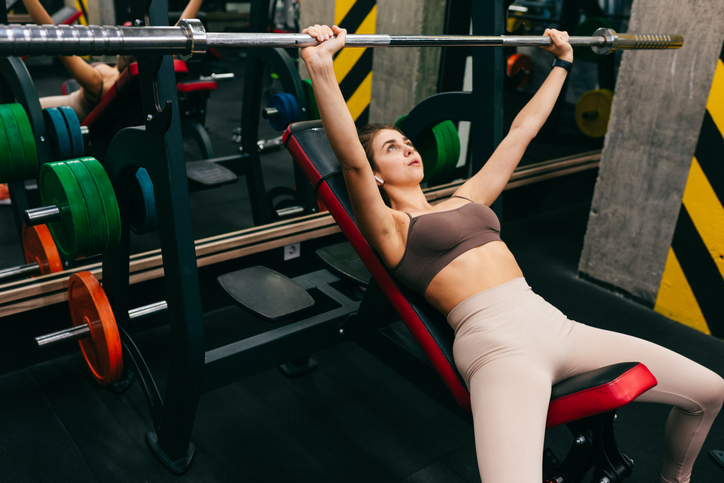4 Tips for Your First Time at the Gym

When it’s your first time at the gym, it’s hard to know what to do first. Hit the cardio machines? Sign up for a class? Lift one of those newfangled cannonballs?
Relax. Whatever you do — whether it’s learning to lift, getting your cardio on, or dancing yourself fit — will be infinitely better than staying on the couch: “Most of the benefits of exercise come when you go from doing nothing to doing something,” says Dr. David Katz, founding director of Yale University’s Prevention Research Center.
The biggest pitfall right now? Getting discouraged, intimidated, or overwhelmed. That’s why we’ve assembled a few tips for getting through those first tentative trips to the gym, so you can stick to your guns and meet your fitness goals.
1. Don’t Rush

Fitness nuts envy gym newcomers like you: That’s because you’re poised to make faster progress than most of them have made in years. Muscleheads call this concept “newbie gaining.”
In fact, about the only thing that can keep a new gym-goer from improving is exercising too much, too often— which is also the mistake rookies make most often.
So your first few weeks in the gym, do less than you think you need to. Way less. Planning on 45 minutes of cardio and 45 minutes of strength work your first day? Slow down, do less, and lift smaller weights than you think you can — your muscles first need to adapt to the new stresses you’re putting onto them.
If you lift too heavy too fast, your muscles may feel so sore that you can’t walk for a week, or you may injure yourself. Both scenarios can squelch your enthusiasm, and your motivation to get back to the gym may go right down the tubes.
Instead, repeat an exercise using a moderate weight for a few days and once your body gets acquainted with the exercise you’ll be able to exert more effort (i.e. burn more calories) and lift heavier weights — at a gradual pace.
Everybody responds differently to exercise, so be patient and listen to your body to know what is too much and what is not enough.
2. Nail Form First
Once you learn the basics of a movement — be it a squat, a lunge, a plank, a pushup, or a pull-up — concentrate on controlling your movement and feeling the exercise.
If your balance is off, your spine twisted or misaligned, or your knees buckling inward, you’re courting injury. Back off, use a lighter weight, or choose an easier version of the movement.
You’re in this for the long haul; there’ll be plenty of time to add weight to the bar in the months ahead.
3. Befriend the Fundamentals

Some gyms are like the cantina scene in Star Wars: all manner of beings engaged in all manner of alien-looking activities. Massive lifters curling enormous dumbbells; petite housewives doing gravity-defying yoga moves; or near-comatose businessmen pedaling away on exercise bikes.
Don’t let them distract or discourage you. Assuming strength training is on your workout menu, your mission in these first weeks is to get good at a handful of movements: the squat, the lunge, the push-up, the row, and the plank.
Next month, you might add the assisted pull-up, the overhead press, and possibly the bench press.
There are thousands of moves you can work on in the gym, but those are the staples of your new endeavor. They work major muscle groups, build the most strength, and burn the most fat of anything you can do in the gym.
You’ll learn other moves over time, but you’ll never stray too far from those basics. When you’re a beginner, get good at the basics, because they work.
4. Don’t Forget Fun
Sound frivolous? In fact, this is the most important tip of them all. Despite its name, working out shouldn’t feel like work. Take it seriously — it’s one of the most important things you can do for your health and well-being—but once you learn the basics, be sure it’s fun.
Maybe not trip-to-the-Caribbean fun, but engaging, rewarding, and invigorating fun. If it isn’t — if you dread your workouts or leave the gym feeling worse than when you came in — you need to make a change.
So work with lighter weights or heavier weights or bodyweight; do something faster like martial arts or slower like yoga; add music, friends, silence or solitude.
Make a small change and see if you enjoy your workouts more. You’re unlikely to stay with an exercise routine you dislike — so find a program you love or at least like and throw yourself into it, one hundred percent, one day at a time.
